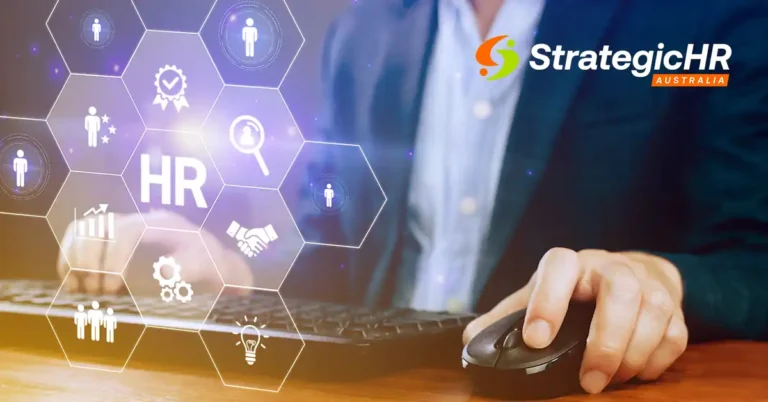Australian organisations are undergoing a profound transformation as the nature of work continues to evolve. While much attention is given to recruitment challenges, the real key to sustainable growth lies in how businesses develop and retain the people they already have.
According to the latest “5 Rs Effect” report from the Australian HR Institute (AHRI), employers are balancing five priorities — Recruitment, Retention, Reorganisation, Reskilling and Redundancy. Of these, Retention, Reorganisation and Reskilling hold the greatest potential to strengthen culture, future-proof the workforce and create genuine opportunities for employee development. Together, they represent a shift from reactive HR to a strategic focus on growing and keeping talent — the foundation of a resilient and people-centred workplace.
Retention: Safeguarding Critical Skills
With unemployment rates still near historic lows and job mobility remaining high, retention is no longer just an HR metric — it’s a business continuity issue.
- Nearly 60% of employers surveyed said keeping staff is one of their toughest challenges this year.
- Turnover costs are significant: replacing a mid-level employee can cost between 50% and 150% of their annual salary once recruitment, training and productivity losses are factored in.
Employers are finding that competitive pay alone is not enough. Employees now place greater value on:
Career development pathways and learning opportunities
Flexible working arrangements and hybrid models
Strong organisational culture, recognition and purpose
Retention strategies therefore need a holistic approach — understanding what motivates employees, fostering belonging and ensuring managers are equipped to have meaningful career conversations.
Reorganisation: Building Agility into Structure
Many organisations are reviewing how work is structured to keep pace with technology, market shifts and customer expectations. AHRI research shows that more than 40% of businesses have restructured or plan to within the next 12 months.
Drivers include digital transformation, cost pressures and the integration of AI and automation tools. Reorganisation doesn’t always mean large-scale change or redundancies; for most, it involves:
Flattening hierarchies to speed up decision-making
Creating cross-functional teams for project agility
Redesigning roles to align with evolving skills needs
Using workforce data to forecast capacity and identify gaps
Handled well, reorganisation can boost engagement by giving employees clearer goals and stronger alignment between their work and business priorities.
Reskilling: Turning Change into Opportunity
Automation and AI are reshaping roles across industries, making reskilling one of today’s most pressing priorities.
- According to AHRI, 35% of employers expect a significant share of their workforce will need to develop new skills within three years.
- Global research suggests that reskilling an existing employee can be up to 40% more cost-effective than hiring externally.
Effective reskilling strategies include:
Identifying at-risk roles early and mapping transferable skills
Partnering with training providers or industry bodies
Creating internal “talent marketplaces” for short-term project experience
Recognising and rewarding learning achievements
Reskilling is also one of the most powerful retention tools — employees who see a clear pathway to growth are far less likely to look elsewhere.
The “5R Effect” is a framework coined by the Australian HR Institute (AHRI) to describe the simultaneous and interconnected pressures reshaping Australia’s workforce as of late 2025. It encapsulates five key dynamics—Recruitment, Retention, Reorganisation, Reskilling, and Redundancy—driven by rapid technological disruptions (e.g., AI and automation), labour market shifts, geopolitical factors, and economic volatility.
According to AHRI’s September 2025 Quarterly Work Outlook report, these forces are creating a “flux” in employment landscapes, with 69% of organisations planning hires, 27% anticipating redundancies, and 9 in 10 expecting major role changes over the next 3–5 years. This effect challenges businesses to balance short-term operational needs with long-term agility, turning potential chaos into opportunities for strategic growth.
Bringing the 3Rs Together
Retention, Reorganisation and Reskilling are deeply interconnected.
Retention improves when people see opportunities for advancement or variety.
Reorganisation works best when existing talent is leveraged rather than replaced.
Reskilling ensures that when business needs shift, you already have the capability to adapt.
Leaders who treat these areas as part of one strategy — not separate initiatives — build stronger, more loyal teams while maintaining agility in changing conditions.
The Interconnected 5R Effect: Beyond Recruitment and Redundancy
The broader “5R Effect” thrives on interdependence. Recruitment fuels the talent pipeline but can strain retention if onboarding falters. Reorganisation identifies at-risk roles, often triggering reskilling to prevent redundancies — for example, redeploying nearly half of affected staff into adjacent positions rather than losing them entirely. In turn, retention reinforces recruitment through proven flexibility and professional development opportunities.
This cyclical relationship demands integrated HR strategies — what Deloitte calls a dual-horizon approach: addressing immediate workforce needs while planning for AI-driven change over the next 12–18 months. Without this synergy, organisations risk fragmented efforts that increase costs and erode morale.
Employee Development as the Common Thread
Employee development sits at the centre of this model. Reskilling has become a key lever for navigating uncertainty, with more than half of employers now investing in AI academies and certifications to future-proof their people. Reorganisation helps employees identify transferable skills and pursue personalised career paths, while inclusive recruitment and onboarding accelerate learning for newcomers.
Even redundancy, when handled ethically, can become a developmental milestone through outplacement support and career transition programs. The result is a workplace where learning is continuous and adaptive, reducing skill gaps and boosting engagement — a proven driver of retention.
Building a Culture that Adapts and Endures
Ultimately, the 5R Effect reshapes company culture into one that values curiosity, adaptability and inclusivity. Retention strategies that prioritise flexibility and wellbeing reinforce belonging and trust. Reskilling nurtures a learning mindset that replaces fear of automation with empowerment. Transparent, compassionate handling of change — from recruitment to redundancy — preserves psychological safety and strengthens the social fabric of the workplace.
In these environments, HR evolves from administrative oversight to cultural architecture — guiding leaders to align values with business evolution. The result: resilient, human-centred organisations where people thrive and loyalty grows.
How Strategic HR Australia Can Support Your Organisation
At Strategic HR Australia, our strategic and practical approach positions us to support your business through every stage of the 5R cycle:
- Strategic Workforce Planning – Develop forecasts and scenario models that anticipate change.
- Reskilling & Capability Building – Design and manage training programs that help people adapt without disruption.
- Redundancy & Role Change Support – Ensure fair, compliant and well-documented processes.
- Recruitment & Retention Strategies – From defining your Employer Value Proposition to designing benefits and recognition systems, we make your workplace more attractive and sustainable.
- Integrated HR Systems Review – Streamline systems to track roles, skills and performance across the employee lifecycle.
The future of work in Australia is being shaped not by one-off recruitment campaigns, but by how effectively employers retain, reorganise and reskill their people. A proactive investment in these areas safeguards institutional knowledge, keeps your workforce relevant and positions your organisation to respond quickly as markets and technologies evolve.
If you’d like to explore how to integrate these priorities into your people strategy, contact us today.







